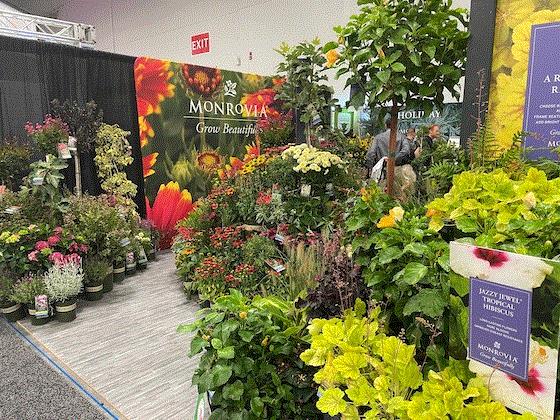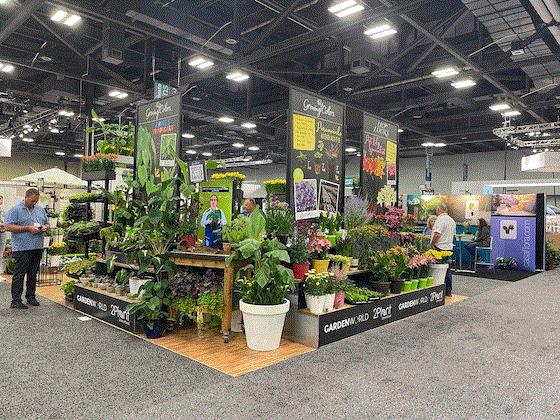What’s Happening Here?
I can’t think of a better way to start the newsletter off than with challenging your diagnostic skills with our subscriber’s favorite feature I call “What’s Happening Here?” Sure, there was a challenge in the last newsletter and most of you successfully diagnosed the problem. Can you do it two consecutive times? Let’s find out.
Check out the leaves on this crop of hibiscus. It’s growing outside, and seemingly overnight the leaves on numerous plants had holes in them. Seems straightforward, doesn’t it?
But not so fast!—I can think of several things that can cause holes in leaves on plants grown outside. I’ll "leave" it at that. Do you know “What’s happening here?" Put your thinking cap on and enjoy the newsletter and I’ll reveal the answer in a few minutes.
Cultivate ‘22
One of the highlights of my summer each year is attending Cultivate. I believe I’ve been every year since 1993, including the virtual event held online in 2020 during the pandemic.
Cultivate’22 did not disappoint. The event felt more like it did before the pandemic, with thousands and thousands of attendees from across the world. I haven’t heard an official number, but it seemed to be very well attended (unofficially, I’d guess somewhere between 8,000 to 9,000 were there).
There were several tours and workshops, more than 140 educational sessions and a humongous trade show floor with more than 650 exhibitors. I thought the booths looked great, traffic on the floor seemed to be fairly steady each day, and the attendees were upbeat, well engaged, and hungry for information.
Many companies featured perennials in their booths. I can’t show them all, but here are a few displays that caught my camera's eye:
 Monrovia's vast offering.
Monrovia's vast offering.
Walters Gardens never disappoints.
The Quality Cuttings Team.
Think Plants.
 Growing Colors.
Growing Colors.
Talking with colleagues, growers and industry peeps at Cultivate’22, it confirmed what many already knew: that growers and garden centers had a mixed year. Some had a good to great year, most had an okay year, and several had a bad year. Many growers over-produced, and some IGCs overstocked their shelves in anticipation of a repeat of '20-'21, but things came back to reality this spring, compounded by extended periods of bad weather, labor shortages and inflation. I’d say most businesses will be pulling in the reins a bit next year and are cautiously optimistic.

Astilbe Volcano
There were several great perennials that caught my eye at Cultivate. I'm planning to cover some of them in the future, but here's one I thought I'd pass along now.
Astilbe Volcano from Unex took center stage at the Think Plants booth. I liked its unique dark purple coloration; however, I'm told the flowers are usually lighter, normally appearing an intense bright pink. Perhaps it was the lower light levels on the trade show floor that modified its appearance. Regardless, even with a lighter coloration, Volcano is sure to erupt with flower power when the plumes develop in the early summer. Hardy to Zone 4.
Michigan Garden Plant Tour
 Walters Gardens' display garden in Zeeland, Michigan, is just one colorful stop on the Michigan Garden Plant Tour.
Walters Gardens' display garden in Zeeland, Michigan, is just one colorful stop on the Michigan Garden Plant Tour.
If you’re looking for new perennials and would like to see how they perform in the landscape, look no further. The
Michigan Garden Plant Tour has begun. In case you’re not already familiar with this event, I’ll be happy to pass along some of the details.
What is it? The Michigan Garden Plant Tour is a coordinated group of open houses of leading young plant producers, plus Michigan State University. The tour allows growers and industry professionals to see new and existing plant selections and how they perform in different outdoor settings. There are six locations in all.
|
The locations with the most perennials are:
1992 96th Ave.
Zeeland, MI 49464
1066 Bogue St.
East Lansing, MI 48824
10371 Rainey Rd.
Litchfield, MI 49252
|
These locations have no or limited number of perennials but have totally awesome annual displays:
3525 Bristol Ave. NW
Grand Rapids, MI 49544
1015 Indian Trail Road
Carleton, MI 48117
5115 Baldwin Street
Hudsonville, MI 49426
|
When is it? The Michigan Garden Plant Tour occurs over a two-week period, July 25 to August 5. You are encouraged to call ahead to the let the tour locations know you’ll be coming. Simply click the name of the tour location above to learn more details about that site’s event, hours, nearby hotels and more.
How much does it cost? Nada, nothing, nil; it’s completely FREE!

The Answer Is …
At the top of the newsletter, I shared the image above and asked if you could properly diagnose the cause of the mysterious holes in the leaves of the hibiscus. The main clue I gave and emphasized was that these were grown outside.
Considering this clue and looking at the holes, I suspect many of you answered damage from heavy rainfall or hall. Unfortunately, that is incorrect. To correctly diagnose the cause, its necessary to take a closer look at the leaves.
If you look closely at the image above, you can see the cause. Still don’t see it. Look at the left side of the hole in the center of the leaf. Still don’t see it? Now turn over the leaf.
There it is. I'm not an entomologist, so feel free to correct me if I'm wrong, but I believe this critter having a feeding frenzy on the hibiscus is the caterpillar of the Salt Marsh Moth (Estigmene acrea). Interestingly, the colors of the hairs can vary quite a bit, appearing grayish-white, yellowish, reddish brown or blackish. Now can you see why I'm not 100% sure on its ID.
Regardless, there are several great options for controlling caterpillars. Depending on the situation and your preferences, there's always hand-picking them off, using biologicals containing Bt (Bacillus thuringiensis), or insecticides containing bifenthrin, cyantraniliprole, cyclaniliprole or spinosad, to name a few.
In case you’re curious, here’s what the adult salt marsh moth looks like:





Thanks for reading this edition of Perennial Pulse. My email is paul@opelgrowers.com if you have any comments, article suggestions or if you'd just like to say hello.
Paul Pilon
Editor-at-Large—Perennial Pulse
Director of Growing—Opel Growers
This email was received by you and 34,717 other fine subscribers!
If you're interested in advertising in Perennial Pulse, contact Kim Brown ASAP and she'll hook you up.